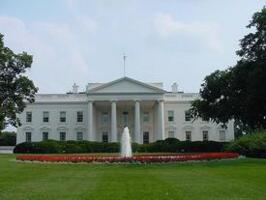Another Part of the Bush Legacy in Question?: A Commentary by Rhodes Cook
Party-building Success Through the Lens of History
Views expressed in this column are those of the author, not those of Rasmussen Reports.
During his first term, George W. Bush was arguably the most successful party-building president since Franklin D. Roosevelt. Like FDR, who fashioned a Democratic coalition that dominated American politics for a generation, Bush during his first four years in office helped the Republicans post gains in Congress and around the country that many in the party viewed as the cornerstone for a similarly long-lived GOP majority.
But during his seemingly ill-starred second term, the Republicans have hemorrhaged seats up and down the ballot--losing their majorities in both houses of Congress, dropping hundreds of seats in the state legislatures, and giving up enough governorships to leave the GOP with less than half of them for the first time in more than a decade.
As a result, with barely a year to go in his administration, that part of Bush's legacy--as a party builder par excellence--remains very much in question.
Over the course of his presidency, Bush has thrown himself into the role of party builder with gusto that few, if any, of his predecessors have matched. He has helped the GOP and its candidates raise tens of millions of dollars and he has stumped extensively for Republican candidates who tapped the White House for assistance.
Boosted by high approval ratings through much of his first term and with the Democrats on the defensive, Bush's efforts to help his party initially paid off. In 2002, he became the first president since FDR in 1934 to see his party gain both House and Senate seats in his first midterm election.
In 2004, Republicans added more seats to their congressional majorities with Bush leading the GOP ticket. The Republican Senate total swelled to 55 seats and the GOP House total to 232, the highest post-election total for the party on the House side in nearly 60 years and equaling the GOP's highest post-election total on the Senate side since the eve of the Great Depression in the late 1920s. A nation split 50-50 after the 2000 election looked after 2004 as though it was definitely leaning Republican.
But Bush's second term has thus far been an unmitigated disappointment for both the White House and the Republican Party (NOTE: Rasmussen Reports polling shows that the number of people considering themselves to be Republicans has dropped significantly since Election 2004). Led by growing voter frustration with the ongoing war in Iraq and a GOP Congress that was widely seen as a rubber stamp for the president, voter approval for both declined quickly in Bush's second term. Presidential approval scores that hovered around 50 percent in 2004 had fallen under 40 percent by the time of the 2006 midterm elections, and congressional approval scores that had been around 40 percent in 2004 Gallup surveys had plummeted into the mid-20s at the time of last year's Democratic comeback.
Yet the Republican setbacks of late are no disaster when viewed in historical terms. It has been the norm for two-term presidents to lose House and Senate seats over the course of their administrations. And the size of the Republicans' falloff in Congress since Bush's election in 2000--19 House seats and one Senate seat--is actually on the low side when compared to the drop suffered by parties of other two-term presidents at a comparable point in their second terms.
By the seven-year mark, Bill Clinton's Democrats had lost nearly 50 House seats from his initial election in 1992, Dwight D. Eisenhower's Republicans had plummeted nearly 70 seats, and Woodrow Wilson's Democrats had lost close to 100 House seats. On the Senate side, the Republican net loss of one seat during the Bush years has also been on the low end for two-term presidents. The result is that the Republicans are not so far down in the House or the Senate that they could not pick up at least one house of Congress in 2008 should the issues agenda shift in their direction.
In short, the final verdict on President Bush as a party builder is yet to be delivered. While talk of a Republican majority has been muted, he continues to raise lots of money for the GOP and its candidates and remains popular with the party base.
To be sure, his overall job approval rating barely tops 30 percent these days. But that is still a few points higher than the score that voters give the Democratic-controlled Congress. Their approval rating in late 2007 is not much higher than the 23 percent score given the Democratic Congress in the Gallup Poll on the eve of the party's titanic wipeout in 1994. And in the 2008 presidential trial heats between Democratic front-runner Hillary Clinton and GOP front-runner Rudy Giuliani, the Republicans are quite competitive. The lead has gone back and forth between the two over the course of 2007 with neither pulling very far ahead of the other.
What may be most ominous for Republican presidential prospects next year is the voters' willingness (if not eagerness) in the last half century to say no to the party in power after two terms, and turn the keys to the Oval Office over to their rivals. Only once since 1952 has a party garnered the electoral votes needed to win three consecutive presidential elections--that being in 1988 when George H.W. Bush won what many have called Ronald Reagan's "third term."
The four other times since 1952 that a third consecutive term for one party was a possibility, the voters turned thumbs down, although each time the vote was close--1960, 1968, 1976, and most recently, the controversial, drawn-out election of 2000--which brought down the curtain on the presidency of Clinton I and raised it on Bush II.
Rhodes is a Senior Columnist for Larry Sabato’s Crystal Ball. He worked as a political writer for the Congressional Quarterly Weekly Report, serving as senior writer for more than a decade.
Rasmussen Reports is a media company specializing in the collection, publication and distribution of public opinion information.
We conduct public opinion polls on a variety of topics to inform our audience on events in the news and other topics of interest. To ensure editorial control and independence, we pay for the polls ourselves and generate revenue through the sale of subscriptions, sponsorships, and advertising. Nightly polling on politics, business and lifestyle topics provides the content to update the Rasmussen Reports web site many times each day. If it's in the news, it's in our polls. Additionally, the data drives a daily update newsletter and various media outlets across the country.
Some information, including the Rasmussen Reports daily Presidential Tracking Poll and commentaries are available for free to the general public. Subscriptions are available for $4.95 a month or 34.95 a year that provide subscribers with exclusive access to more than 20 stories per week on upcoming elections, consumer confidence, and issues that affect us all. For those who are really into the numbers, Platinum Members can review demographic crosstabs and a full history of our data.
To learn more about our methodology, click here.



